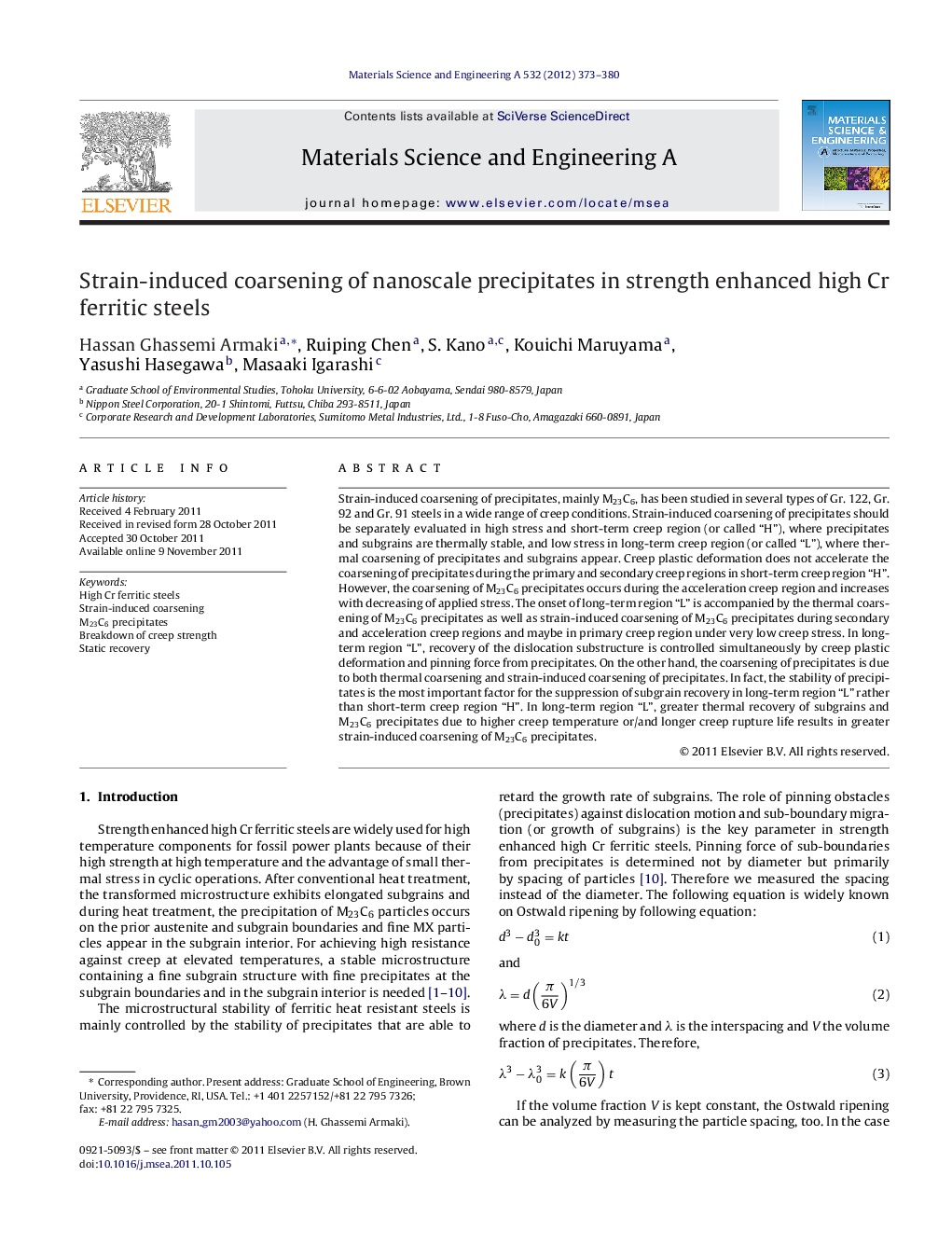| Article ID | Journal | Published Year | Pages | File Type |
|---|---|---|---|---|
| 1577878 | Materials Science and Engineering: A | 2012 | 8 Pages |
Strain-induced coarsening of precipitates, mainly M23C6, has been studied in several types of Gr. 122, Gr. 92 and Gr. 91 steels in a wide range of creep conditions. Strain-induced coarsening of precipitates should be separately evaluated in high stress and short-term creep region (or called “H”), where precipitates and subgrains are thermally stable, and low stress in long-term creep region (or called “L”), where thermal coarsening of precipitates and subgrains appear. Creep plastic deformation does not accelerate the coarsening of precipitates during the primary and secondary creep regions in short-term creep region “H”. However, the coarsening of M23C6 precipitates occurs during the acceleration creep region and increases with decreasing of applied stress. The onset of long-term region “L” is accompanied by the thermal coarsening of M23C6 precipitates as well as strain-induced coarsening of M23C6 precipitates during secondary and acceleration creep regions and maybe in primary creep region under very low creep stress. In long-term region “L”, recovery of the dislocation substructure is controlled simultaneously by creep plastic deformation and pinning force from precipitates. On the other hand, the coarsening of precipitates is due to both thermal coarsening and strain-induced coarsening of precipitates. In fact, the stability of precipitates is the most important factor for the suppression of subgrain recovery in long-term region “L” rather than short-term creep region “H”. In long-term region “L”, greater thermal recovery of subgrains and M23C6 precipitates due to higher creep temperature or/and longer creep rupture life results in greater strain-induced coarsening of M23C6 precipitates.
Graphical abstractFigure optionsDownload full-size imageDownload as PowerPoint slideHighlights► Strain-induced coarsening of precipitates is studied in regions “H” and “L”. ► Precipitates and subgrain structures are thermally stable in region “H”. ► Thermal coarsening of precipitates and subgrains appear in region “L”. ► Strain-induced coarsening of M23C6 precipitates occurs in region “L”. ► Greater static recovery results in greater strain-induced coarsening of M23C6.
